


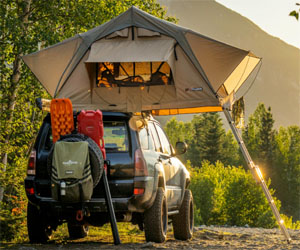
In a world dominated by urban landscapes and digital screens, the beauty of outdoor living stands as a beacon of simplicity, serenity, and reconnection with nature. It's a timeless and enduring concept that allows us to escape the confines of our daily routines, step into the open embrace of the natural world, and savor the beauty that unfolds in the great outdoors.
One of the most captivating aspects of outdoor living is the opportunity to break free from the trappings of modern life. As we venture into the wilderness, we leave behind the constant notifications, the urban noise, and the pressures of our busy schedules. In the absence of technology, we find ourselves enveloped in the pure and untamed beauty of the environment, a setting where we can truly disconnect from the digital world.
The beauty of outdoor living reveals itself in the small and simple details that are often overlooked in our daily lives. It's in the subtle hues of a sunset, the rustling of leaves in the wind, the songs of birds welcoming the dawn, and the sound of flowing water in a pristine stream. As we immerse ourselves in the great outdoors, we gain a newfound appreciation for these nuances that often escape us in the urban rush.
Outdoor living is an invitation to reconnect with nature and rediscover our most primal instincts. Setting up camp, gathering firewood, and preparing meals over an open flame connect us to the essentials of survival. It fosters a sense of self-sufficiency, resilience, and resourcefulness, and in doing so, we deepen our understanding of the environment that sustains us.
Moreover, the beauty of outdoor living is about forging deeper connections with friends and family. Campfires become the gathering place for stories and laughter, where the bond of shared experiences is strengthened. The simplicity of outdoor living provides a unique setting for building and nurturing relationships, away from the distractions of modern life.
Outdoor living is also an opportunity to savor the thrill of adventure and exploration. Whether it's hiking through lush forests, kayaking on pristine lakes, or gazing at the stars on a clear night, the natural world becomes a vast playground for discovery. It awakens our sense of wonder, encourages us to explore, and rekindles the thrill of facing nature's challenges.
The beauty of outdoor living is an invitation to escape the confines of urban living and embrace the serenity, simplicity, and wonder of the natural world. It's a reminder that the Earth is a wondrous place, waiting for us to explore its beauty, connect with its rhythms, and immerse ourselves in the timeless allure of the outdoors.
So, if you've ever longed for a deeper connection with nature, a break from the digital noise, or a chance to rediscover the beauty of simplicity, consider embarking on an outdoor living adventure. It's a journey that offers serenity, adventure, and reconnection with the natural world—an opportunity to embrace the enduring beauty of outdoor living.
The Journey Into Nature's Uncharted Realms
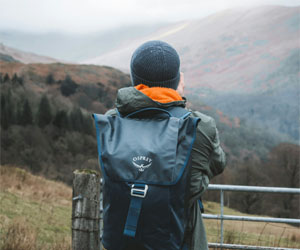 Preserving Pristine Beauty: Exploring untouched terrains comes with a profound responsibility: preserving the pristine beauty that makes them unique. Those who venture into these areas understand the importance of minimizing their impact, adhering to Leave No Trace principles, and becoming stewards of the environment.
Preserving Pristine Beauty: Exploring untouched terrains comes with a profound responsibility: preserving the pristine beauty that makes them unique. Those who venture into these areas understand the importance of minimizing their impact, adhering to Leave No Trace principles, and becoming stewards of the environment.
Remote And Rugged Landscapes: Untouched terrains are often found in remote and rugged landscapes. These areas are typically far from the conveniences of modern civilization, making exploration an adventure in itself. Whether trekking through dense rainforests, traversing arid deserts, or summiting towering peaks, the journey is as much a part of the experience as the destination.
Wildlife Encounters: Exploring untouched terrains often leads to remarkable wildlife encounters. These areas are havens for diverse and often rare species of animals and plants. Observing these creatures in their natural habitats is a privilege that fosters a deep connection with the natural world.
Challenges And Self-Discovery: The challenges posed by untouched terrains are opportunities for self-discovery. Navigating rough terrain, facing unpredictable weather, and dealing with unforeseen obstacles are part of the journey. These experiences test one's resilience, resourcefulness, and adaptability.
Advanced Techniques For Snowboarders
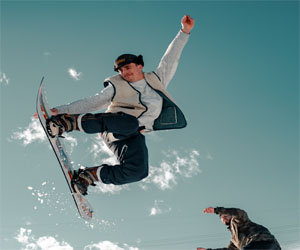 2. Riding Switch: Riding switch, also known as riding fakie, is the art of snowboarding in the opposite direction from your regular stance. To become an advanced snowboarder, you should be comfortable riding switch. Practice riding with your non-dominant foot leading and work on your balance and control to improve your overall snowboarding skills.
2. Riding Switch: Riding switch, also known as riding fakie, is the art of snowboarding in the opposite direction from your regular stance. To become an advanced snowboarder, you should be comfortable riding switch. Practice riding with your non-dominant foot leading and work on your balance and control to improve your overall snowboarding skills.
3. Terrain Park Tricks: If you're aiming to take your snowboarding to the next level, consider venturing into terrain parks. Learn tricks like ollies, spins, grabs, and board slides. Terrain parks offer an exciting playground for advanced snowboarders, allowing you to express your creativity and style while navigating jumps, rails, and other features.
4. Off-Piste Riding: Off-piste or backcountry snowboarding takes you away from the groomed slopes and into the untouched, wild terrain. Before attempting off-piste riding, it's crucial to acquire the necessary avalanche safety skills and equipment. This advanced snowboarding technique opens up a world of exploration and adventure for those who crave more than just groomed runs.
5. Navigating Steep Terrain: Advanced riders can handle steeper slopes with confidence and control. To master steep terrain, work on your balance, edge control, and body positioning. Learn to initiate quick turns and control your speed, making descents on challenging slopes feel exhilarating rather than intimidating.
6. Powder Riding: Powder snow is a snowboarder's dream. To excel in powder riding, keep your weight centered, use a wider stance, and make fluid, surf-like movements. Lean back slightly to keep your nose afloat and enjoy the feeling of floating on a sea of untouched snow.
Understanding The Risks Of Sports-Related Injuries
 1. Acute Trauma: One of the most immediate risks in sports is acute trauma, which includes injuries such as fractures, dislocations, and concussions. These injuries often occur as a result of sudden, forceful impact and can have severe consequences if not promptly addressed.
1. Acute Trauma: One of the most immediate risks in sports is acute trauma, which includes injuries such as fractures, dislocations, and concussions. These injuries often occur as a result of sudden, forceful impact and can have severe consequences if not promptly addressed.
2. Overuse Injuries: Overuse injuries are another common risk in sports. These injuries develop gradually from repetitive stress on a particular area of the body. Overuse injuries can affect tendons, muscles, and joints, leading to conditions like tendinitis, stress fractures, and muscle strains.
3. Sprains And Strains: Sprains and strains are frequent sports injuries. Sprains involve the stretching or tearing of ligaments, while strains affect muscles or tendons. These injuries often result from improper technique, inadequate warm-up, or overexertion.
4. Dislocations: Dislocations occur when a bone is forcibly pushed out of its joint. Sports that involve sudden impacts or falls, such as football or basketball, carry a higher risk of dislocation injuries.
5. Stress Fractures: Stress fractures are hairline cracks in bones that typically result from repetitive, high-impact activities. Runners, gymnasts, and dancers are particularly susceptible to these injuries.
6. Concussions: Concussions are a type of traumatic brain injury often caused by head impacts, common in contact sports like football and soccer. Proper diagnosis and management of concussions are critical to avoid long-term consequences.
The Art Of Riding The Waves
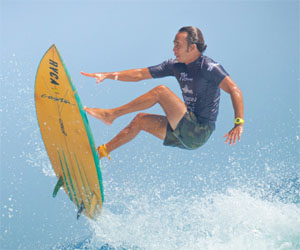 The Physical Demands: Surfing is an incredibly physically demanding sport. Surfers must paddle out against the force of incoming waves, which can be strenuous. Paddling requires upper body strength and endurance, making surfers some of the fittest athletes. Additionally, maintaining balance on the board, performing maneuvers, and navigating the waves necessitate core strength, agility, and coordination.
The Physical Demands: Surfing is an incredibly physically demanding sport. Surfers must paddle out against the force of incoming waves, which can be strenuous. Paddling requires upper body strength and endurance, making surfers some of the fittest athletes. Additionally, maintaining balance on the board, performing maneuvers, and navigating the waves necessitate core strength, agility, and coordination.
Competitive Surfing: Surfing competitions are a testament to its status as a sport. Events like the World Surf League (WSL) and the Olympics have brought surfing to a global stage. Competitive surfers are judged based on a variety of criteria, including the difficulty of maneuvers, style, flow, and how well they read and ride the waves. These competitions are highly intense, featuring some of the world's most skilled athletes.
The Skill Of Wave Riding: Surfing is an art form that involves a deep understanding of wave dynamics and the ability to harness their power. Surfers read the waves, anticipate their behavior, and position themselves to catch and ride them effectively. Riding waves with style, grace, and precision is an integral part of the sport. From carving and cutbacks to aerial maneuvers, surfers continually push the boundaries of what is possible on a wave.
Rules And Regulations Of Pickleball
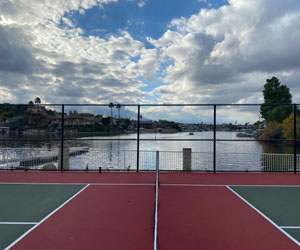 Court Dimensions: A standard pickleball court is 20 feet wide and 44 feet long, with a non-volley zone (the kitchen) extending 7 feet from the net on each side. The kitchen is a no-volley zone, meaning you can't hit the ball out of the air within this area.
Court Dimensions: A standard pickleball court is 20 feet wide and 44 feet long, with a non-volley zone (the kitchen) extending 7 feet from the net on each side. The kitchen is a no-volley zone, meaning you can't hit the ball out of the air within this area.
Scoring: Pickleball is played to 11 points, and you must win by at least two points. In singles, each side gets one serve, while in doubles, both players on the serving team have the opportunity to serve.
The Serve: The serving team starts the game from the right side of the court and must serve underhanded from the baseline. The serve must clear the net and land in the opposing service court, diagonally across from the server. It must also bounce once before being struck by the receiving team. The serving team continues to serve until they commit a fault.
Double Bounce Rule: After the serve, both teams must allow the ball to bounce once before they can engage in a volley (a non-bouncing exchange). This rule ensures that rallies begin with a level of control and reduces the possibility of quick, aggressive plays.
Faults: Common faults in pickleball include stepping into the kitchen while volleying the ball, hitting the ball out of bounds, failing to clear the net, or volleying the ball from the kitchen without letting it bounce. Faults result in the opposing team being awarded a point or the service.
Let Serve: If the serve hits the net and lands in the correct service court, it is called a "let serve" and is retaken without penalty.
Non-Volley Zone Violation: Players are prohibited from volleying the ball from the non-volley zone (the kitchen). Stepping into the kitchen while hitting the ball is a fault.
Serving Position: When serving, players must have one foot behind the baseline and inside the court boundaries. The other foot must remain in contact with or behind the baseline until the ball is struck.